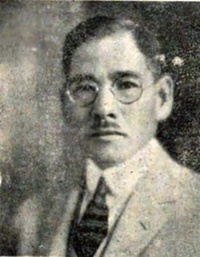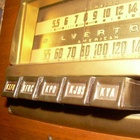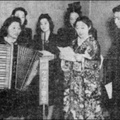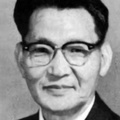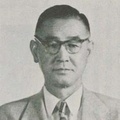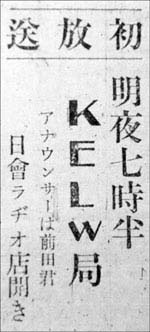
At a meeting of the Rafu Japanese Association Councillors held on the evening of November 11, 1931, it was resolved to broadcast a radio program once a week. Based on this, on December 5 of the same year, the so-called "Rafu Japanese Association Broadcast" was started on KELW station in Burbank, and was hosted by the Japanese Association (Chairman Akashi Iku). The program was broadcast in both Japanese and English for 30 minutes every Saturday from 7:30 pm.
The announcer was Maeda Teruo (Kunimoto Terudou) of the Rafu Shimpo, who had experience working at the "Japanese Broadcasting Station" (see Part 2 ) the previous year. KELW was also known for its early morning Spanish language programs aimed at the Mexican immigrant community. For this reason, it is thought that they had a good understanding of broadcasts in Japanese.
According to the American trade magazine Broadcast (December 15, 1931), the program had two purposes: one was to entertain Japanese people living in the Los Angeles area, and the other was to draw interest in Japan as a tourist destination.
However, the latter is thought to be a superficial explanation, and in reality the emphasis appears to have been on broadly explaining to American society Japan's position, which had been subject to constant criticism since the Manchurian Incident (September 1931), and on eliminating discrimination against Japanese people.
An article titled "Rafu Nichikai Broadcasting Begins: Hoping to Reach Full Capability" was published in the Rafu Shimpo on December 3, 1931, under the name "Teru". It is believed to have been written by Maeda Teruo, who was in charge of announcing the program. The comment includes a warning based on reflection on the suspension of Japanese language broadcasts the previous year, which is something only someone with experience could say.
The Rafu Shimpo reported on the content of the first day's program as follows:
First, Chairman Akashi shared his thoughts on the establishment of an exclusive broadcasting station for the Japanese Association and expressed his hope for the cooperation of general residents in the area. Next, Secretary Nomura introduced the Gardening Club, which possesses skills unique to the Japanese, in English. Next, Vice Chairman Mukaida gave a brief greeting, explaining that the event was supposed to be promoted to Americans under the title of ``The Manchurian Incident and Japan's Position,'' but that it had been postponed because it was not possible for a speaker from the Chinese side to attend. Finally, the first session ended with a three-song ensemble of tea songs, and it was announced that the next session would feature appearances by Master Izutsuya Kimiyo and Mrs. Dr. Shinohara.
(The Rafu Shimpo, December 6, 1931)
The second session began with a speech by Secretary Fumiya Nomura entitled "A Call for Understanding of Japanese Labor Relations" (in English), followed by Nagauta pieces such as "Aki no Irotane," "Mitsu-kudari," and "Otsu-e," accompanied by songs and shamisen accompaniment by Mrs. Shinohara, Master Kimiyo Izutsuya, and Mrs. Yokoi. In addition, there was an "Introduction of Businessmen in the City."
In the third program, Mr. B. Chang, the Chinese representative, and Henry Shimauchi, the English editor of the Rafu Shimpo, representing the Japanese Association, discussed their respective positions on the Manchurian issue. As entertainment, the Kichokai Gidayu master Nozawa Kicho and Yoshida Kamikazu performed "Ozao no Shichifukujin Funaobi" (The Seven Lucky Gods Play on a Large Rod).
The fourth program was broadcast on January 9, 1932. The content was a New Year's greeting from Chairman Iku Akashi, his aspirations for society, and a variety of Japanese and American music.
With each episode, coverage of the program in Japanese newspapers became less frequent, and after the fifth episode, no newspapers reported on the program's contents. Looking at the records of the Rafu Japanese Association from that time, the topic of "cancellation of radio broadcasts" appears on the agenda on February 2nd and 10th. The Nichibei Shimbun (February 13, 1932) reported that the decision to cancel the broadcasts was made at the Japanese Association Council meeting on the night of the 10th.
It is thought that the burden of producing each program and the cost of broadcasting were a bottleneck. It may also have been related to the fact that an election for the president of the Japanese Association was held at the end of January 1932, and Katsuma Mukaida was appointed as the new president, replacing Iku Akashi, who had been promoting radio broadcasting.
*This article is an excerpt from Japan Hour (2020).
© 2020 Testuya Hirahara


